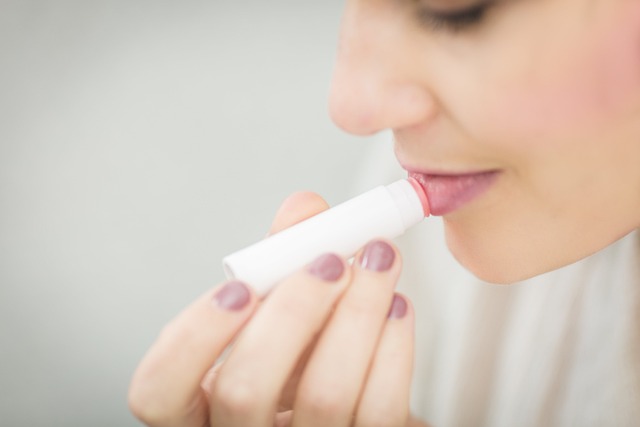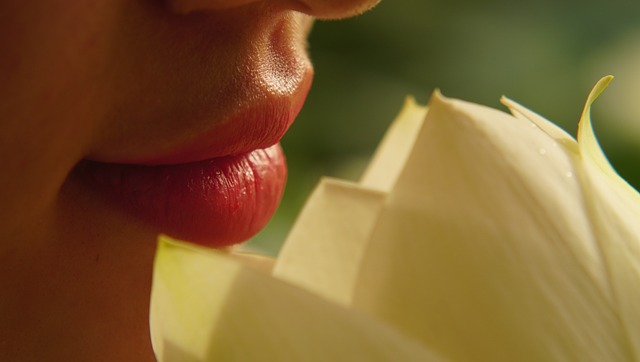Tinted lip balms are a multifunctional skincare and cosmetic product that offer both color and moisture for the lips. They contain a mix of nourishing emollients like shea butter and coconut oil, along with hydrating occlusive agents such as beeswax or silicones to maintain lip softness. These balms come in various colors, thanks to pigments from both natural (like beetroot or annatto) and synthetic sources, with iron oxides providing reds and browns, and titanium dioxide creating lighter shades. For UV protection, some tinted lip balms incorporate sunscreen ingredients like avobenzone or octinoxate. Preservatives are added to ensure product safety by preventing microbial growth, with phenoxyethanol or benzyl alcohol being common choices. Recent advancements in formulation have led to the increased use of synthetic ingredients for their stability and safety, providing a wide range of colors without compromising on comfort or hydration. These modern tinted lip balms also often include UV protection, emphasizing their multifaceted benefits. In response to consumer demand, there's a trend towards natural alternatives in both pigments and moisturizers, with options like castor seed oil, coconut oil, and shea butter offering similar benefits while avoiding potential irritants and synthetic fragrances. This shift ensures that tinted lip balms cater to health-conscious consumers who prefer natural ingredients for their lip care routine.
Exploring the intricacies of tinted lip balm, this article peels back the layers of its chemical composition. We delve into the role of synthetic ingredients that contribute to formulation efficacy and safety. Subsequently, we examine natural alternatives to these chemicals, offering a comprehensive view for those curious about the makeup of their favorite lip products. Join us as we navigate the nuanced world of tinted lip balm ingredients, ensuring you’re well-informed on what adorns your lips.
- Unveiling the Chemical Composition of Tinted Lip Balm: An Overview
- The Role of Synthetic Ingredients in Tinted Lip Balm Formulation
- Understanding Natural Alternatives to Common Chemicals in Tinted Lip Balm
Unveiling the Chemical Composition of Tinted Lip Balm: An Overview

Tinted lip balms are formulated with a blend of pigments and moisturizing agents to enhance both color and hydration for the lips. The chemical composition of these products typically includes emollients, such as shea butter or coconut oil, which provide a nourishing effect, and occlusive agents like beeswax or silicones that help retain moisture. These lip balms also contain pigments derived from natural or synthetic sources to impart the desired color upon application. The specific pigments used can vary widely, ranging from iron oxides for reds and browns to titanium dioxide for whites and pastel shades. Additionally, sunscreen chemicals like avobenzone or octinoxate may be included to protect lips from ultraviolet (UV) radiation, a common cause of lip damage and aging. Preservatives such as phenoxyethanol or benzyl alcohol are essential components to prevent microbial growth and ensure the product’s safety for use. Each ingredient is carefully selected and balanced within the formula to create a tinted lip balm that is both visually appealing and beneficial for lip health. Consumers seeking a product that offers color, comfort, and protection should consider the chemical composition of tinted lip balms, which are crafted with a precise combination of these elements.
The Role of Synthetic Ingredients in Tinted Lip Balm Formulation

In contemporary formulations of tinted lip balm, synthetic ingredients play a pivotal role in enhancing both the aesthetic appeal and protective properties of the product. These ingredients are carefully selected to impart color while maintaining the nourishing qualities of a balm. For instance, synthetic pigments offer a wide array of vibrant colors that can cater to diverse consumer preferences. Beyond aesthetics, these compounds often possess desirable textural qualities that make application smooth and comfortable. Additionally, synthetic ingredients are formulated to work in synergy with moisturizing agents like oils and waxes, ensuring the lips remain hydrated throughout wear. This dual focus on color and moisture is a testament to the innovative capabilities within the cosmetic science industry, as it allows consumers to enjoy the benefits of both a lipstick and a lip balm in a single product.
Furthermore, the inclusion of synthetic ingredients in tinted lip balms is not merely about the immediate effects on the lips; it also involves considerations for stability, longevity, and safety. These compounds are rigorously tested to ensure they adhere to strict regulatory standards. The use of synthetics also allows for a greater control over product consistency and performance, leading to a more uniform application and longer-lasting color payoff. Manufacturers often incorporate sunscreen agents into these formulations to protect the lips from harmful UV rays, further underscoring the multifunctional nature of tinted lip balms enriched with synthetic ingredients. The role of these ingredients in the formulation process is crucial for delivering a product that meets the modern consumer’s demand for both functionality and beauty in their personal care items.
Understanding Natural Alternatives to Common Chemicals in Tinted Lip Balm

When exploring the realm of tinted lip balms, consumers are increasingly seeking out options that minimize exposure to certain chemicals prevalent in conventional lip products. Natural alternatives offer a safer and often more nourishing choice for those looking to enhance their lip care regimen. For instance, synthetic dyes like FD&C Red No. 27 and Lake CI 42090, which are commonly used for imparting color to lip balms, can be swapped out for natural pigments such as beetroot or annatto extracts. These plant-based alternatives provide the desired tint without the potential irritants associated with synthetic dyes. Similarly, petroleum-derived ingredients like petrolatum, which are used as emollients to soften and smooth lips, can be replaced with natural oils such as castor seed oil, coconut oil, or shea butter. These oils not only offer similar moisturizing properties but also deliver additional skin benefits, including antioxidants and vitamins that support lip health. Additionally, consumers should look for lip balms free from fragrances, which can include a mix of synthetic compounds, opting instead for products scented with essential oils or naturally occurring aromatic extracts. By choosing tinted lip balms with natural alternatives to common chemicals, individuals can enjoy the benefits of colored lip care while promoting healthier lip conditions and reducing their exposure to potential harmful substances.
In summary, the exploration of the chemical composition within tinted lip balm reveals a complex interplay between synthetic and natural ingredients. While synthetics play a pivotal role in formulating the desired texture and color, natural alternatives offer consumers diverse options that align with their preferences and values. This article has shed light on the multifaceted nature of tinted lip balm, encouraging consumers to make informed decisions based on the ingredients used in their favorite products. It underscores the importance of transparency in cosmetic labeling to ensure consumers are aware of what they’re applying to their skin, fostering a more informed and discerning marketplace for tinted lip balms.
